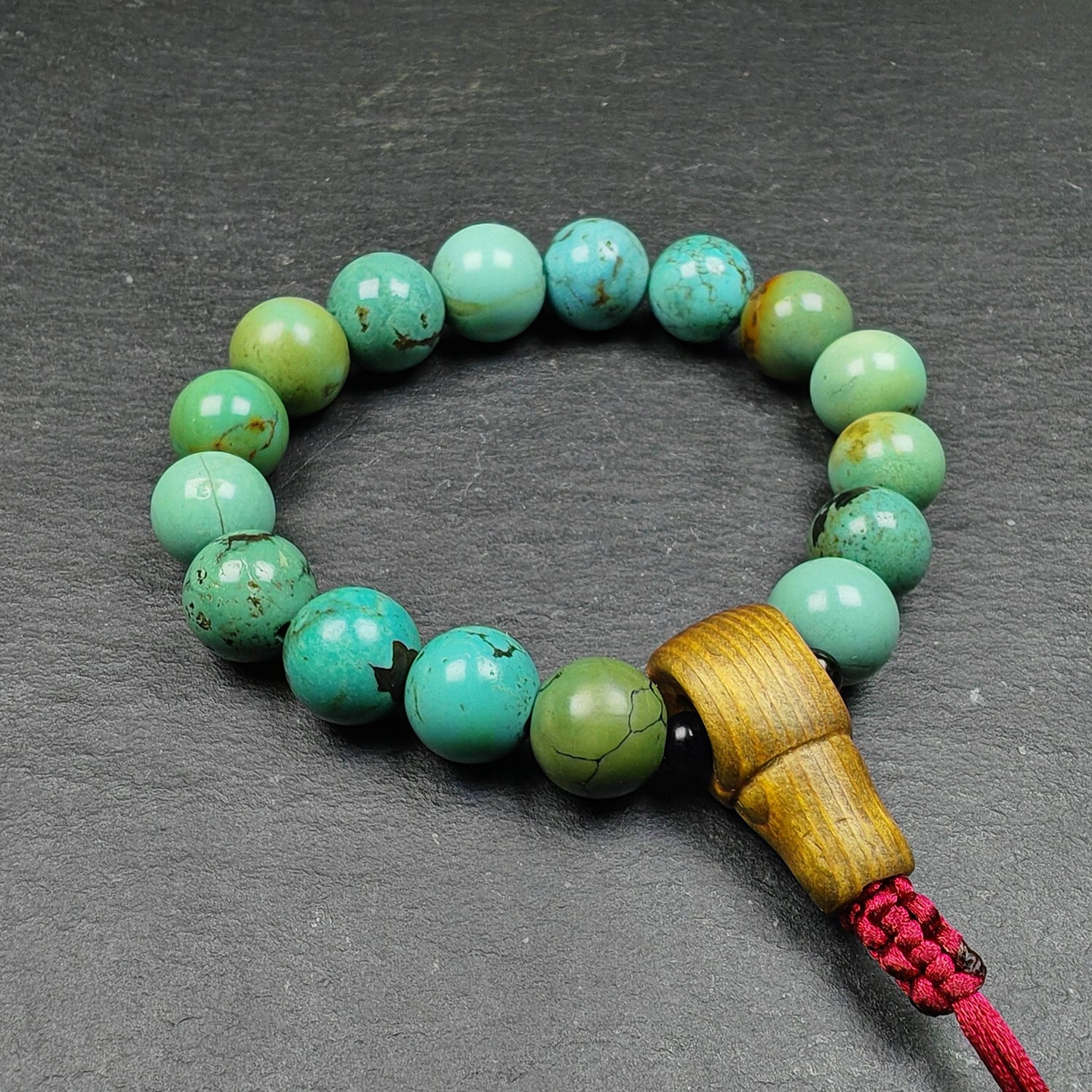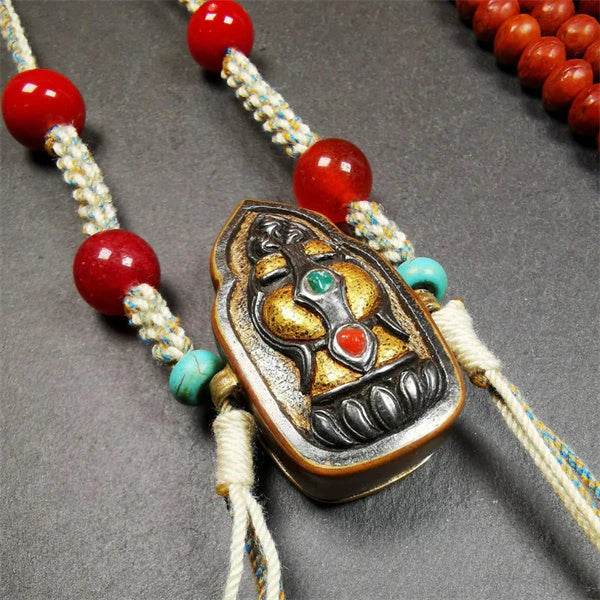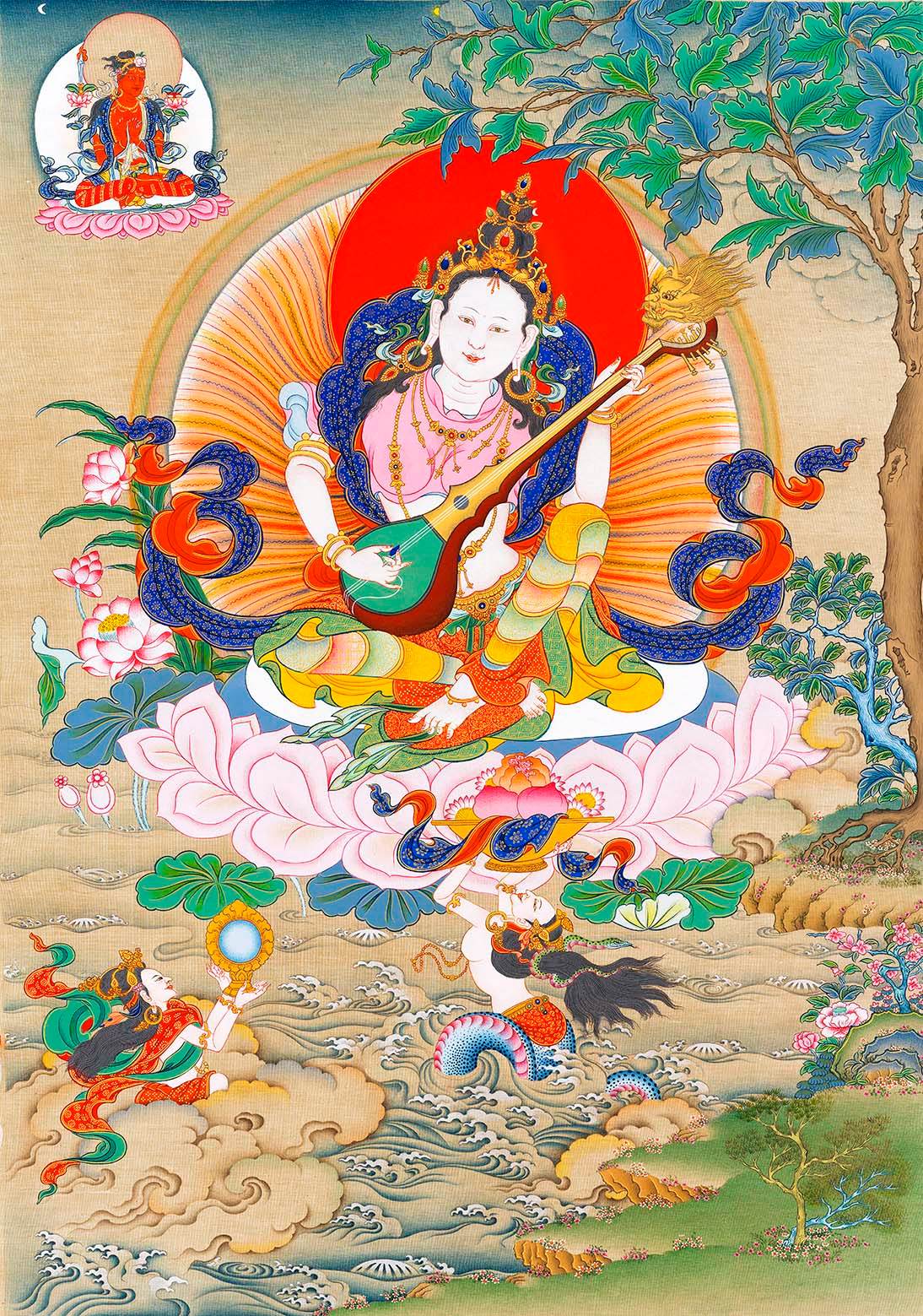
Six Hundred Years of the Eastern Buddhist Monastery: Drepung Monastery in Texts and Images (Part 1)
བཀྲ་ཤིས་གཏེར་གྱི་བུམ་པ་བཟང་པོ་ཅན།
དཔལ་ལྡན་འདོད་དགུའི་འབྱུང་གནས་ཡིད་བཞིན་ནོར།
ལྷུན་གྲུབ་མཛད་པའི་ཆར་འབེབས་ཆོས་ཀྱི་སྤྲིན།
འཇམ་དབྱངས་ཆོས་རྗེའི་ཞབས་ལ་གསོལ་བ་འདེབས།
"Jar of Auspicious and Sublime Treasures"
"Wish-Fulfilling Jewel Endowed with Virtue"
"Cloud of Accomplishments Showering Blessings"
"Homage and Prayers to the Lord Mañjuśrī"
— Musepa Lodrö Rinchen Senge མུ་སྲད་པ་བློ་གྲོས་རིན་ཆེན་སེང་གེ་
(Dates of birth and death unknown)
[Note]: Musepa Lodrö Rinchen Senge was a disciple of **Jamyang Chöje Tashi Palden** (འཇམ་དབྱངས་ཆོས་རྗེ་བཀྲ་ཤིས་དཔལ་ལྡན་; 1379–1449), the founder of Drepung Monastery, and **Drapa Rinchen** (གྲགས་པ་རིན་ཆེན་; dates unknown), the first throne-holder of Drepung’s **Gomang Dratsang**. Due to conflicts at Drepung, Musepa and his disciples were forced to leave and planned to relocate to nearby **Sera Monastery**.
During the journey to Sera, Musepa composed a short devotional verse in praise of Jamyang Chöje Tashi Palden, excerpted above as *"The Garland of Perfect Virtues"* (ཡོན་ཏན་དཀྱིལ་འཁོར་མ་). To Musepa, Jamyang Chöje Tashi Palden (the "Lord Mañjuśrī") embodied the eternal ideal of a Gelug scholar—his contributions to philosophical discourse (systematizing Tsongkhapa’s teachings) and institutional legacy (founding Drepung) made him "one of Tsongkhapa’s greatest successors."
In emulation of Jamyang Chöje, Musepa later established **Sera Jé Dratsang** (སེ་ར་བྱེས་), which became the largest and most academically rigorous college at Sera Monastery. Known for its complex curriculum, Sera Jé attracted the highest number of monks from **Northern Tibet and Kham**, mirroring the scholarly tradition of Drepung’s Gomang College.

Panoramic View of Drepung Monastery
Included in "Tibet Series Photo Collection: Drepung Monastery"

Debate
Included in "Tibet Series Photo Collection: Drepung Monastery"

The Disciplinary Monk of Drepung Monastery
Included in "Tibet Series Photo Collection: Drepung Monastery"

The Liberation-Upon-Seeing Maitreya: The Eight-Year-Old Form
The Jointly Revered Main Deity of Drepung Monastery
Included in "Tibet Series Photo Collection: Drepung Monastery"

The Bluestone Hall: Tushita Palace
(Known in Tibetan as "Ganden Podrang")
Included in "Tibet Series Photo Collection: Drepung Monastery"


The Main Hall of Loseling College, Drepung Monastery
Included in "Tibet Series Photo Collection: Drepung Monastery"

The White Stupa of Drepung Monastery
Included in "Tibet Series Photo Collection: Drepung Monastery"

Interior of the Assembly Hall
Included in "Tibet Series Photo Collection: Drepung Monastery"

Ancient Texts Preserved at Drepung Monastery
Catalogued in the two-volume "Catalogue of Tibetan Ancient Books in Drepung Monastery"
Preface
In 2016, the Tibet Autonomous Region held a series of events commemorating the 600th anniversary of Drepung Monastery. This ancient institution, which has nurtured countless Tibetan scholars and profoundly influenced the historical development of Tibet, now faces new opportunities and challenges. According to Alex Wayman (1921–2004), a renowned American scholar of Indo-Tibetan studies, Drepung Monastery's significance in the Buddhist world is comparable to that of the University of Bologna and the University of Oxford in the development of European humanities.
Within this Gelugpa monastery, Buddhist scholars from across Asia (along with some from other religious traditions) gather. Through rigorous academic competition, fierce philosophical debate, and extensive scholarly writing, they continually shape the intellectual landscape of Tibetan Buddhism. Supported by generations of patrons and donors, Drepung has evolved beyond a mere monastic complex—its vast collection of ancient texts, high-caliber classical artworks, and diverse intellectual influences have transformed it into Tibet’s Nalanda University.
Before Drepung’s rise, Tibet’s most important academic center was Sangphu Monastery (གསང་ཕུ་དགོན་), the birthplace of Tibetan logic and epistemology (pramāṇa). Notably, the Monastic Regulations of Drepung (established by the Fifth Dalai Lama) mandated that Drepung’s scholar-monks undertake study trips to Sangphu.
From the monastery's founding
The origin story behind the establishment of any monastery is invariably intertwined with the ideals and practices of its founder, and the most direct reflection of these ideals and practices lies in the monastery’s sacred name. Drepung Monastery (འབྲས་སྤུངས་དགོན་, meaning "Rice Heap") has been subject to various interpretations regarding the origin of its name. Among these, the most commonly accepted explanation attributes the name to the monastery’s geographical and architectural features—specifically, its fan-shaped alluvial terrain and the pure white hue of its walls (as if piled with divine rice).
However, a closer examination of historical texts reveals that this interpretation is merely a folk legend rather than a definitive account. Desi Sangye Gyatso (སྡེ་སྲིད་སངས་རྒྱས་རྒྱ་མཚོ་; 1653–1705), in his "History of the Ganden Tradition" (དགའ་ལྡན་ཆོས་འབྱུང་), explicitly states that the name Drepung derives from the sacred Buddhist site in South Asia known as "Drepung Stupa" (འབྲས་སྤུངས་མཆོད་རྟེན་; Śrīdhānyakaṭaka). This stupa marks the location where the Buddha taught the Kālacakra Tantra, making it a landmark in the transmission and development of Vajrayana Buddhism.

Cover of "The History of the Ganden Tradition"

Satellite Image of Drepung Monastery and Nechung Monastery
(Large star: Drepung Monastery / Small star: Nechung Monastery)
When Jamyang Chöje Tashi Palden received the auspicious white conch shell from his teacher Tsongkhapa (which Tsongkhapa had discovered at Ganden Khora Mountain), a monastery destined to fulfill Tsongkhapa's prophecy—"the child monastery shall surpass the mother monastery in glory" (the mother monastery being Ganden Monastery)—was about to make its historic debut.
In 1416, with the patronage of Nenpa Namkha Zangpo (སྣེའུ་དཔོན་ནམ་མཁའ་བཟང་པོ་), the chieftain of the Liwu region, and his family, Jamyang Chöje Tashi Palden began the construction of Drepung Monastery. Notably, Namkha Zangpo's family had previously funded renovations of Jokhang and Ramoche Temples in Lhasa, and he himself was one of the most devoted followers of the Gelug tradition (having presided over Lhasa's Butter Lamp Festival in honor of Tsongkhapa).

Cover of "The History of the Four Great Monasteries and the Upper & Lower Tantric Colleges"
Beyond the aforementioned origin narratives demonstrating the master-disciple relationship (dharma transmission), the personal story of Jamyang Chöje Tashi Palden also shapes the accounts of Drepung Monastery's founding.
In 1744, Purjokpa completed his renowned work on Gelug historical lineage, The History of the Four Great Monasteries and the Upper & Lower Tantric Colleges (གྲྭ་ས་ཆེན་པོ་བཞི་དང་རྒྱུད་པ་སྟོད་སྨད་ཆགས་ཚུལ་). Within this text, Purjokpa recorded two classic accounts of Drepung Monastery’s founding.
In the first narrative, Jamyang Chöje dreamt of constructing a bridge to help beings cross a great river—an allegory for the compassionate impetus behind establishing Drepung.
The second narrative describes Jamyang Chöje receiving divine inspiration in a dream from a white celestial deity, who revealed the monastery’s auspicious location. This vision was regarded as a testament to the monastery’s destined success. Panchen Sönam Drakpa (པཎ་ཆེན་བསོད་ནམས་གྲགས་པ་; 1478–1554), author of The New Red Annals and Drepung’s 11th throne-holder, identified this "white deity" as the protector Pehar Gyalpo.

"Pehar Gyalpo", 18th century, Rubin Museum
One of the manifestations of Pehar Gyalpo
The protector deity Nechung (གནས་ཆུང་), guardian of Drepung Monastery

Nechung Monastery
Included in SRG Archive
If The History of the Ganden Tradition and The History of the Four Great Monasteries and the Upper & Lower Tantric Colleges provide an overview of Drepung Monastery’s two major expansion periods (under the Fifth Dalai Lama and the Tibetan ruler Polhané), then among modern scholarly works, the definitive book on Drepung is The Religious History of Drepung (published in Hamburg, 1974) by Geshe Gendün Lodrö (དགེ་བཤེས་དགེ་འདུན་བློ་གྲོས་; 1924–1979).
This 452-page magnum opus, drawing on the author’s firsthand academic and monastic training at Drepung as well as historical records from successive monastery throne-holders, meticulously documents every facet of this six-century-old institution’s legacy.

Cover of "The Religious History of Drepung"
(The book is available in both Tibetan and English editions)
In the following article, I will mainly reference the three works mentioned above and biographies of past abbots, along with two panoramic images of Zhebaisi Temple, to detail the historical development, transmission model, and architectural layout of this six-hundred-year-old ancient temple. The two panoramic images I will be using are the "Zhebaisi Temple Panoramic Layout" held by the Rubin Museum of Art in New York and the "Zhebaisi Temple Panoramic Image - Folk Festival" held by the Royal Arts and History Museum in Belgium.

"Panoramic Layout of Drepung Monastery", 1898
Rubin Museum of Art, New York

"Panoramic View of Drepung Monastery: Folk Celebrations", late 18th century
Royal Museums of Art and History, Belgium






